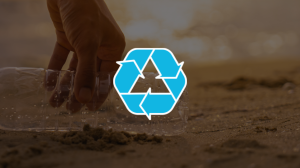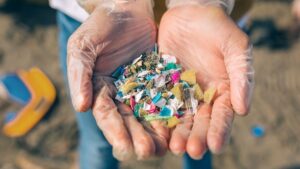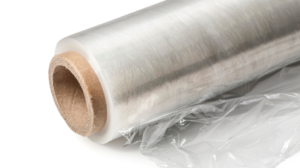‘DNA’ in plastic pollution can be used to hold manufacturers responsible for its clean-up
Researchers are advocating for the creation and enforcement of unique, scannable “codes” on manufactured plastics.
Plastic waste that ends up in the environment and in animals can then be scanned, helping to identify polluters and drive both producer responsibility and system change.
Story Preview
Thousands of marine mammals, reptiles, fish and birds die every year, usually from starvation, after mistaking plastic waste for food.
So what if there was a way to trace plastic back to its manufacturer, and even to hold them responsible for its clean-up?
There’s now an emerging area of technology that makes it possible to embed a traceable code, which researchers have likened to plastic “DNA”, into plastic polymer.
In a recent paper published in Polymer Chemistry, researchers have rallied the polymer-chemistry community to work towards embeddable codes for plastic, that can be read on small handheld devices in the field, and ideally even on mobile phones.
“Currently, to read out a code by itself requires multi-million-dollar equipment and specialist, physical chemists,” said Christopher Barner-Kowollik, a co-author on the paper and macromolecular photochemistry researcher at the Queensland University of Technology (QUT).
“What we are proposing is, we need either a small handheld device or even a mobile phone [to read the code].”
And that could have some powerful implications.
Nick Kilvert, ABC News, Nov 18, 2022.



